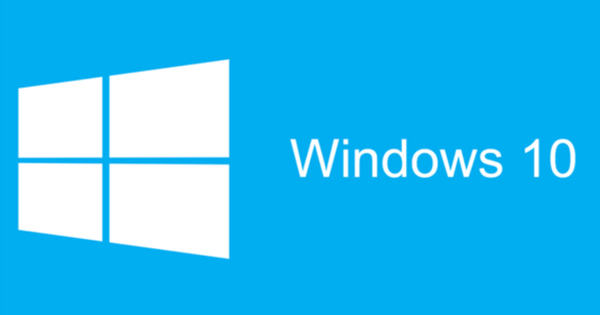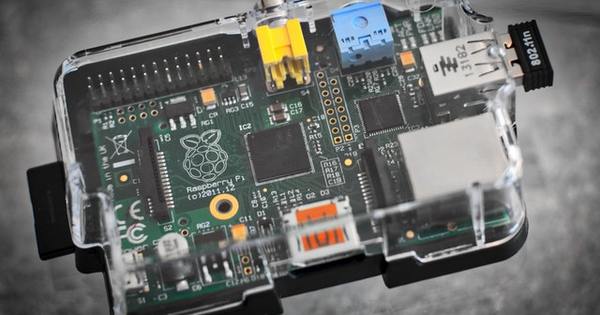Chances are that you have a Windows PC and that you also have an Android smartphone. Two completely different devices, but that does not mean that data exchange is not possible. On the contrary: there are some built-in functions and a lot of (free) tools that bring both devices closer together. In this article, we present you some useful solutions.
Tip 01: Fast Transfer
We start with a simple scenario: you have a file on your PC and you want to transfer it to your smartphone. This is possible with the free Send Anywhere service. On your PC, use a browser to go to //send-anywhere.com, or install the desktop application or Outlook add-in. Press the plus at send and double click on the desired file. Then press the send-knob. A six digit code as well as a QR code will appear. You must first install the free Send Anywhere app from the Google Play Store on your smartphone. Open this app and tap Receive. Enter the code or tap the QR code icon. In the latter case you point the camera at the QR code of your PC screen and a little later the file is transferred. By the way, this can also be done in the opposite direction, in which case you tap the sendbutton in the mobile app.

Tip 02: Sharing data (cloud)
Send Anywhere is of course not very useful if you regularly need data from your PC. Then the FolderSync app is a better solution, especially if you work with one or more cloud services. After installing on your smartphone and granting the necessary permissions, tap on the menu (the icon with the three bars) and open Accounts. Press the plus button and choose one of approximately 27 supported storage services, such as Dropbox, Google Drive or OneDrive. Make up a name, tap Verify account and select the corresponding account. Confirm with To allow and with Save. Tap the menu again and choose Folder pairs.
You can add a pair of folders via the plus button: enter a name, choose the account name you just created and indicate which external and internal folder you choose. The first is a (empty or not) folder in your cloud storage service, the second is a folder on your smartphone. For example, you set the synchronization type to Two-way sync. If desired, you can schedule an automatic synchronization here via the built-in task scheduler. Confirm with Save. With the syncbutton you can start the synchronization immediately (via WiFi).
Now all you have to do is install the sync folder from the cloud storage service on your PC (if you haven't already) and match it to the folder you provided in FolderSync. Similarly, you can now add accounts from other cloud storage services.

Tip 03: Sharing data (Wi-Fi)
If you prefer not to use a cloud service as an intermediate station, a file manager is recommended that can access shared folders from your Windows PC via the wireless network. There are various apps available in the Play Store, but many of them are full of advertisements, while they offer too little functionality, are cluttered or attack your privacy. Although ES File Explorer Manager PRO costs 3.19 euros, it is a great deal. There is a free version, but it also suffers from bloatware and advertisements.
Start the app, tap the menu (the icon with the three lines) and choose Network / LAN. First try the scanbutton off: there is a good chance that it will immediately discover your network devices and therefore also your PC with shared folders. If this does not work, press the plus button in the lan overview and enter the necessary information about the computer (which acts as a server here): IP address or host name and perhaps also login details.
Now all you have to do is navigate through the shared folders to get to the files you want. You can of course also add files yourself.
Navigate your Windows and network files with your Android smartphoneTip 04: Remote control
You can of course go one step further and take over the control of your PC on your smartphone. There are various tools and apps for this, including PC Remote, Teamviewer, VNC Viewer and Splashtop Personal.
We're looking at Chrome Remote Desktop here. That requires a one-time preparation. Start your Chrome browser on your PC and visit //remotedesktop.google.com/access. Click in the box at Set up remote access at the bottom of the blue button with an arrow down. You will now be directed to the page with the Chrome Remote Desktop extension. Click here add to Chrome / Add Extension / Acceptand install. Confirm with Yes (2x) for the app to install. Enter a suitable name for your computer and press Next one. Enter a PIN of at least six digits and confirm with Start and Yes. On the web page, the message that your PC is online will appear.
Over to your smartphone, where you install Chrome Remote Desktop from the Play Store. Start the app, tap the name of your PC and enter the PIN code. Confirm with Make a connection. Your PC will be notified that your desktop is currently being shared; The condition is of course that the PC is switched on and that you are logged in with your Google account. With the button Stop sharing you disconnect. On the webpage you can View/Edit Request an overview of linked clients and also remove a link via the trash can icon.

Tip 05: Photos and messages
We're going the other way: since Windows 10 version 1809 it's possible via the app your phone view photos and text messages from your phone on your PC and also send text messages via your computer. Press the Windows key, tap your phone and start this app (if the app is not yet on your computer, install it from the Microsoft Store). click on To work, sign in with your Microsoft account and select Pair phone, after which you enter your mobile number.
On your smartphone, tap the link in the message you receive and install the companion app. Start the app, sign in with your Microsoft account here as well, allow some permissions and click Ready and a little later on To allow. You should now also see the most recent photos from your smartphone in the PC app. Optionally, click on the menu here and add all sliders Photos and Messages on On. In the section Messages (preview) your text messages will appear and you can New message also send text messages yourself. This app should be compatible with smartphones with Android 7 or higher installed.

Tip 06: Mobile management
If you are looking for a real management tool for your mobile device, then the Windows app Your Phone falls short for the time being. A free tool like Syncios Manager is much more powerful. You choose the best Customize Install to customize certain installation options.
You must first activate the USB debugging mode on your smartphone. Go to the settings screen, choose System / About phone and tap seven times Build number. This ensures that you System now also the option Developer options sees standing. Open this section and activate USB debugging. Then connect the smartphone to your PC via a USB cable. Syncios will automatically detect your device and also activate the Syncios service on your Android device.
The operation and possibilities now largely speak for themselves. You get an overview of the apps, contacts, text messages, media and photos and via the backupbutton you can back it up to your PC and, if necessary, restore it with recovery. You can also add new items or remove items.
Under the button Toolkit there are also several useful utilities, such as a ringtone maker, an audio and video conversion tool, etc. (note: some tools only work in the premium version of Syncios; cost: 26 euros).

Tip 07: AirDroid
We go one step further: with the free AirDroid it is possible to receive a notification on your PC as soon as a message (for example e-mail, SMS, or WhatsApp) arrives on your Android device. Install AirDroid on your Windows PC, create an account and sign in. Then install the AirDroid mobile app on your smartphone and allow the requested permissions. There are quite a few, but the intention is to enable remote control via AirDroid.
In the Windows app you can now open various sections, such as File Transfer, Files, Notification, SMS, Call History, Contacts and AirMirror. There is a real chance that you will have to grant additional permissions for some of these sections: this will be explained in the application window itself.
Very interesting AirMirror. With this technology, you can take over your Android device's camera and virtual keyboard from your PC, take screenshots, and even live-duplicate your Android device's screen image on your PC. Through Non-Root Authority To activate, your device does not even have to be 'rooted'. However, you must temporarily connect your device with the USB cable and USB debugging activate (see also tip 6).
 View and control your Android device from your PC, without root privileges
View and control your Android device from your PC, without root privileges Reflection
Since Windows 10 version 1809, it is in principle also possible to display the screen of your Android smartphone live on your Windows PC, without external tools. That doesn't always seem to work with all devices, but you can give it a try.
In Windows, go to Institutions and choose System / Project to this PC. In the top drop-down menu, choose Available everywhere or Available everywhere in secure networks. And with Questions to project on this PC you choose the best option Every time a connection is requested. You can also enter a PIN code, after which you can close the window. Go to the settings window of your Android device, select Connected Devices / Casting (on some smartphones this can also be something like Screen mirroring to be). You should find your PC name here and as soon as you tap it the screen of your Android device will be displayed on the PC.

Tip 08: Emulation
The ultimate step in bringing Android and Windows closer together is an operating system emulation. In other words, you simply run Android within Windows. We use the free and user-friendly tool BlueStacks for this, for which you don't even need (separate) virtualization software. You can complete the installation in the blink of an eye.
BlueStacks can take a few minutes to start up for the first time. Then set the desired language and country and press the button To work. Sign in with your Google account; you may want to create a separate account for this. After a while you can start. You simply install apps from the Google Play Store app or click on the button with the three dots at the top left of the Home screen and choose Install Apk (if you have such an installation file on your PC). Have fun with… Windroid? andows?


